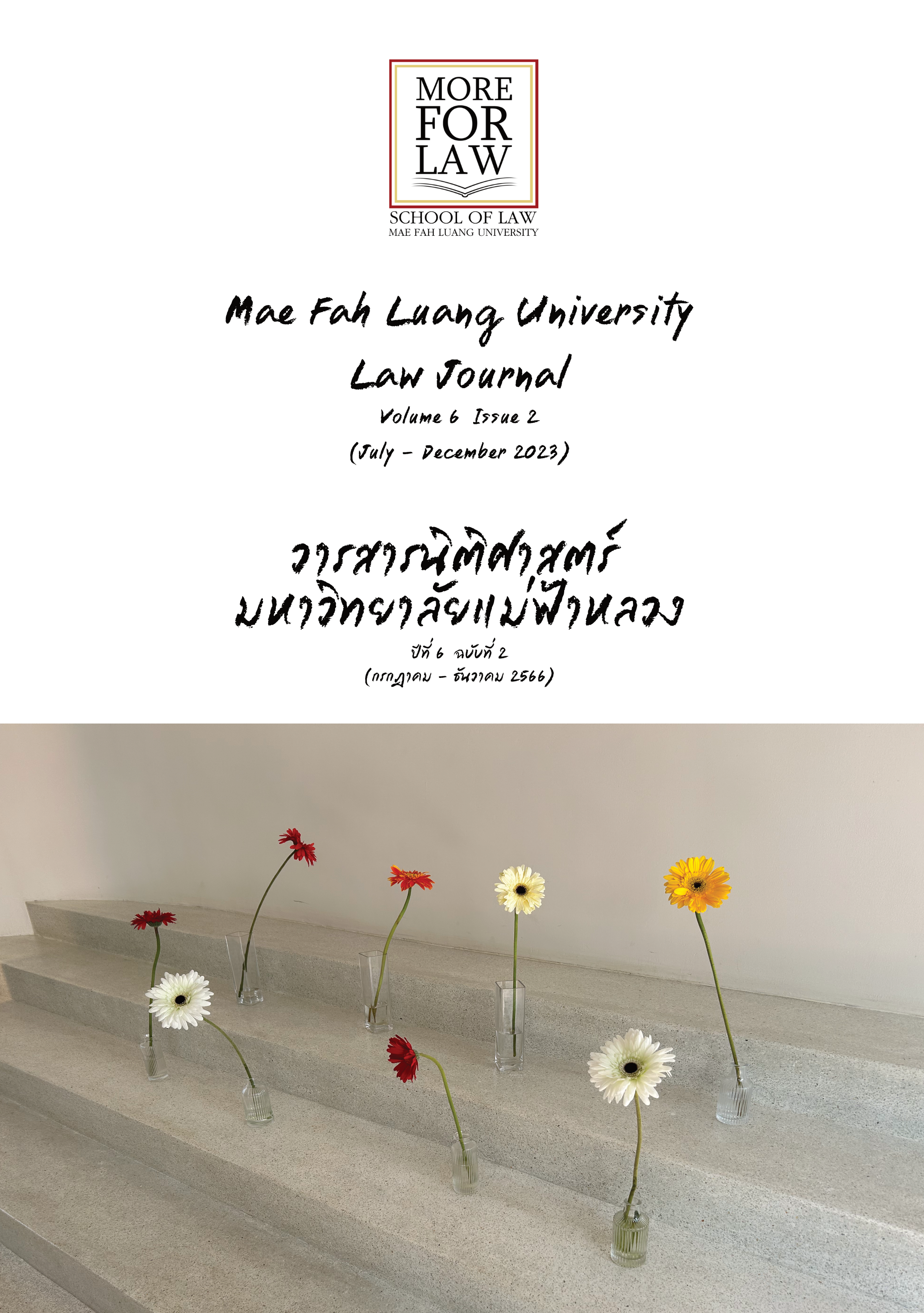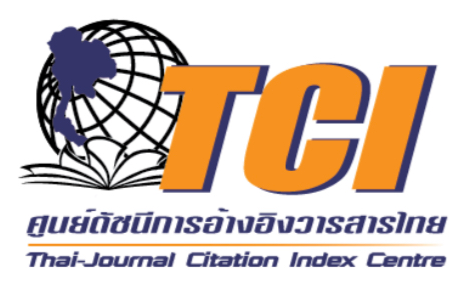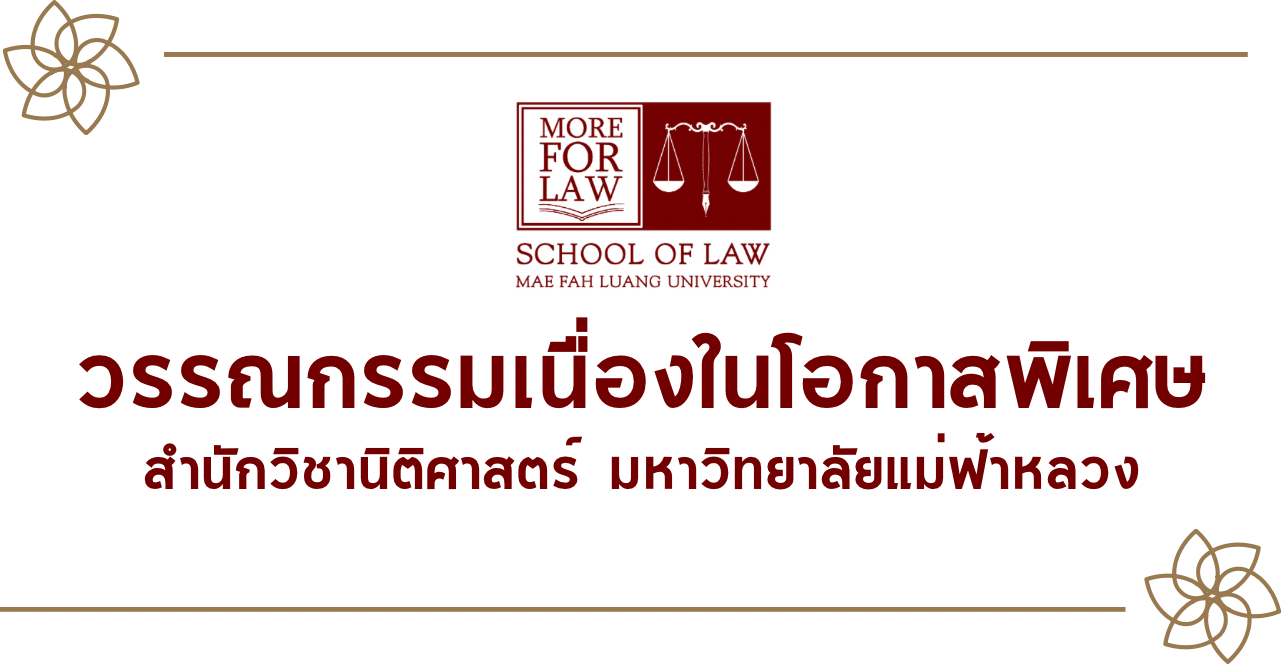Policies and Laws for the Management of Non-invasive Alien Species in Thailand: A Case Study of the African Green Monkey (Chlorocebus sabaeus)
DOI:
https://doi.org/10.14456/mfulj.2023.12Keywords:
Chlorocebus sabaeus, Alien Species, Legal MeasurementAbstract
The African green monkey (Chlorocebus sabaeus) is a primate species native to Africa. However, it has been reported to have survived and become an alien species in two other areas of the world: the area of the island nations in the Caribbean Sea and the United States. They have successfully adapted to the ecosystems of these places despite being an alien species, which is having a negative impact on the local natural resources.
According to the study, African green monkeys reside in an enclosed forestsetting on a private business property in Bangkok. African green monkeys have adapted to and lived in that area for a long time. According to the authors’estimates, this group of African green monkeys is an alien species, but in the case of foreign countries, it is a non-invasive type. However, when considering case studies from other countries, Thailand should have a precautionary managementguideline for African green monkeys to prevent problems that may occur in the future.
The author proposes management guidelines for African green monkeys in Thailand that consider both the welfare of wild animals and the sociological and cultural ecological factors arising from the area’s relationship between African green monkeys and humans, as well as the prevention of potential incidents that may harm natural resources, as follows: 1) The authors proposed the species recognition of the African green monkey as an alien species in the Cabinet Resolution on February 20, 2018, on measures to prevent, control, and eradicate alien species to create awareness of the legal status of the green monkey, which will allow relevant agencies to set up guidelines for assessing the status of the monkeys. 2) There are various acts in Thailand that address the management of alien species, but those laws are important in solving specific problems. There is no central law specifically addressing this issue. Therefore, it is suggested that a central law be passed that is specifically designed to address these issues to implement more effective management of alien species.
Downloads
References
บุญศรี มีวงศ์อุโฆษ, กฎหมายสิ่งแวดล้อมเปรียบเทียบ, (กรุงเทพมหานคร: โครงการตําราและหนังสือเรียนคณะนิติศาสตร์ มหาวิทยาลัยธรรมศาสตร์, 2560).
ประกาศกระทรวงทรัพยากรธรรมชาติและสิ่งแวดล้อม เรื่อง กำหนดให้สัตว์ป่าบางชนิดเป็นสัตว์ป่าควบคุม พ.ศ. 2565 ใน ราชกิจจานุเบกษา, เล่มที่ 139 ตอนพิเศษ 235 ง (2565).
พระราชบัญญัติโรคระบาดสัตว์ พ.ศ. 2558 ใน ราชกิจจานุเบกษา, เล่มที่ 132 (2558).
พระราชบัญญัติสงวนและคุ้มครองสัตว์ป่า พ.ศ. 2562 ใน ราชกิจจานุเบกษา, เล่มที่ 136 (2562).
สำนักนโยบายและแผนธรรมชาติและสิ่งแวดล้อม, มติคณะรัฐมนตรี เมื่อวันที่ 20 กุมภาพันธ์ 2561 เรื่อง มาตรการป้องกัน ควบคุม และกำจัดชนิดพันธุ์ต่างถิ่น, (กรุงเทพมหานคร: กระทรวงทรัพยากรธรรมชาติและสิ่งแวดล้อม, 2561).
สุรศักดิ์ ใจกล้า, มาตรการทางกฎหมายในการจัดการชนิดพันธุ์ต่างถิ่น, (วิทยานิพนธ์ปริญญาโท หลักสูตรนิติศาสตรมหาบัณฑิต สาขาวิชากฎหมายสิ่งแวดล้อม คณะนิติศาสตร์ มหาวิทยาลัยธรรมศาสตร์, 2563).
อำนาจ วงศ์บัณฑิต, กฎหมายสิ่งแวดล้อม, (กรุงเทพมหานคร: สำนักพิมพ์วิญญูชน, 2557).
A. M. Boulton, J. A. Horrocks and Jean Baulu, The Barbados Vervet Monkey (Cercopithecus aethiops sabaeus): Changes in Population Size and Crop Damage, International Journal of Primatology, Volume 17 Issue 5 (October 1996).
Amy Hartman and others, SARS-CoV-2 Infection of African Green Monkeys Results in Mild Respiratory Disease Discernible by PET/CT Imaging and Shedding of Infectious Virus from Both Respiratory and Gastrointestinal Tracts, PLoS Pathogens, Volume 16 Issue 9 (September 2020).
CBD, The Conservation on Biological Diversity [Online], 1 January 2023. Source: http://www.cbd.int/doc/legal/cbd-en.pdf%0A%0A
Courtney Woolsey and others, Establishment of an African Green Monkey Model for COVID-19 [Online], 14 February 2023. Source: https://doi.org/10.1101/2020.05.17.100289
Deborah Williams, An Introduced Primate Species, Chlorocebus sabaeus, in Dania Beach, Florida: Investigating Origins, Demographics, and Anthropogenic Implications of an Established Population, (Ph.D. Dissertation, Department of Biological Sciences, Florida Atlantic University, 2019).
F. E. Poirier, The St. Kitts Green Monkey (Cercopithecus aethiops sabaeus): Ecology, Population Dynamics, and Selected Behavioral Traits, Folia Primatologica, Volume 17 Issue 1-2 (December 1972).
Gérard Galat and Anh Galat-Luong, Chlorocebus sabaeus in Mammals of Africa (Vol. II: Primates), Edited by Thomas Butynski , Jonathan Kingdon and Jan Kalina, (London: Bloomsbury Publishing, 2013).
Justin Springer, Best Practices in Green Monkey Deterrence: A Manual for Farmers in Barbados, (Barbados, The Ministry of Environment and National Beautification, 2020).
Kerry Dore, An Anthropological Investigation of the Dynamic Humanvervet Monkey (Chlorocebus aethiops sabaeus) Interface in St. Kitts, West Indies, (Ph.D. Dissertation, Department of Anthropology, University of Wisconsin-Milwaukee, 2013).
Laura Meyerson and Jamie Reaser, Bioinvasions, Bioterrorism, and Biosecurity, Frontiers in Ecology and the Environment, Volume Issue 6 (August 2003).
Michael Lo and others, Remdesivir (GS-5734) Protects African Green Monkeys from Nipah Virus Challenge, Science Translational Medicine, Volume 11 Issue 494 (May 2019).
Michael McGuire, The History of the St. Kitts Vervet, Caribbean Quarterly, Volume 20 Issue 2 (1974).
Michael Muehlenbein and others, Travel Medicine Meets Conservation Medicine in St. Kitts: Disinhibition, Cognitive-Affective Inconsistency, and Disease Risk among Vacationers around Green Monkeys (Chlorocebus sabaeus), American Journal of Primatology, Volume 84 Issue 4-5 (May 2022).
S. L. Motzel and others, Diagnosis of Tuberculosis in Nonhuman Primates in International Perspectives: The Future of Nonhuman Primate Resources, (Washington (DC): National Academies Press, 2003).
Sara Johnston and others, Detailed Analysis of the African Green Monkey Model of Nipah Virus Disease, PLoS ONE, Volume 10 Issue 2 (February 2015).
Sery Gonedelé Bi and others, Chlorocebus sabaeus, (The IUCN Red List of Threatened Species, 2020).
Suchinda Malaivijitnond, Primate (Macaque) Research and Me in Primates Studies, Edited by Suddan Wisudthiluck and Worrawit Boonthai, (Bangkok: O.S. Printing House, 2021).
Wichuda Arreemit and Adisorn Phaepilin, Thailand’s Legal Challenge on the Threat of Felis catus to Natural Resources in The 12th Trans-Pacific International Conference (TPIC): Connectivity and Social Changes in the Trans-Pacific Region, (Busan: Pukyong National University, 2022).
Woodrow Denham, West Indian Green Monkeys: Problems in Historical Biogeography in Contributions to Primatology, Vol 24, Edited by Frederick Szalay, (Bazel: Karger, 1987).
Downloads
Published
How to Cite
Issue
Section
License
Copyright (c) 2023 Mae Fah Luang University Law Journal

This work is licensed under a Creative Commons Attribution-NonCommercial-NoDerivatives 4.0 International License.





